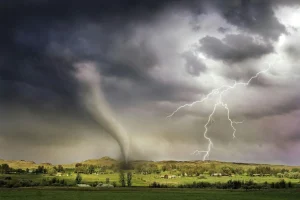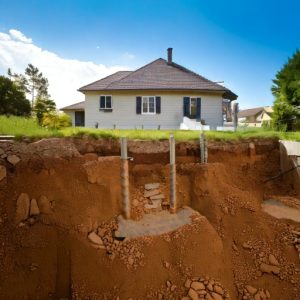A crumbling chimney can be more than just an eyesore. While it’s easy to assume the problem is isolated to the masonry or external structure, the truth is that chimney damage can often be a red flag for deeper foundation issues. Understanding the connection between your chimney and foundation is essential for diagnosing the real cause of the damage and taking appropriate action.
In this blog post, we’ll explore why chimneys crumble, how foundation problems play a role, and what you can do to restore both your chimney and your home’s structural integrity.
Why Do Chimneys Crumble?
Chimneys are exposed to the elements year-round, enduring rain, snow, wind, and extreme temperatures. Over time, these factors can cause the brickwork, mortar, and concrete to deteriorate. However, structural issues below the chimney are often responsible for accelerated damage.
Here are some common reasons chimneys crumble:
- Moisture Infiltration: Water is one of the biggest enemies of masonry. When water seeps into small cracks and freezes, it expands, causing further damage.
- Poor Construction: A chimney built on unstable or improperly prepared ground can quickly succumb to structural damage.
- Aging Materials: Mortar and bricks naturally weaken over time, especially if they weren’t built to withstand harsh weather.
- Lack of Maintenance: Without regular inspections, small cracks or loose bricks can worsen, leading to more extensive damage.
While these issues might seem chimney-specific, they’re often symptoms of a more extensive foundation problem.
The Foundation-Chimney Connection
A chimney is typically one of the heaviest parts of your home’s exterior, and it requires a stable foundation to remain upright. When the foundation shifts, settles, or cracks, the chimney is often the first to show signs of damage.
How Foundation Issues Impact Chimneys
- Differential Settling
- If your foundation settles unevenly, one side may sink lower than the other. This creates a tilt that can cause the chimney to lean or crack.
- Soil Movement
- Expansive soils, common in areas like Lawrence, KS, can shrink and swell with changing moisture levels. This movement affects the foundation’s stability, putting pressure on the chimney.
- Foundation Cracks
- Large foundation cracks can transfer stress upward, resulting in cracks along the chimney or walls near the fireplace.
- Water Damage
- If water pools around the foundation, it can seep into both the chimney and the home’s base, accelerating deterioration.
Signs That Your Foundation May Be Causing Chimney Problems
It’s not always obvious that foundation damage is behind your crumbling chimney. However, if you notice the following signs, it’s worth investigating further:
- Leaning or Tilting Chimney: A visibly leaning chimney is a strong indicator of foundation movement.
- Cracks in the Chimney: Large, stair-step cracks along the chimney bricks are often linked to shifting foundations.
- Gaps Between the Chimney and House: A widening gap suggests the foundation may be pulling the chimney away from the structure.
- Interior Wall Cracks: Cracks near your fireplace or surrounding walls can signify foundation strain.
- Uneven Floors or Stuck Doors and Windows: These are classic signs of foundation settlement that can indirectly affect the chimney.
What to Do If Your Chimney Is Crumbling
Addressing a crumbling chimney without investigating your foundation is like treating a symptom without curing the underlying cause. Here’s a step-by-step approach to resolve the issue:
1. Schedule a Foundation Inspection
A professional foundation expert can assess whether structural movement is causing your chimney damage. They may recommend soil stabilization, pier installation, or other foundation repair methods.
2. Evaluate Chimney Damage
Once the foundation is stabilized, a masonry professional can inspect the chimney. Repairs might include repointing (replacing deteriorated mortar), sealing cracks, or in severe cases, rebuilding sections of the chimney.
3. Improve Drainage Around the Foundation
Prevent future damage by ensuring water flows away from your home’s foundation. Install downspout extensions, clean gutters regularly, and maintain a proper slope in your yard.
4. Perform Ongoing Maintenance
Regularly inspect your chimney for cracks or signs of wear, especially after extreme weather. Applying a waterproof sealant can also protect the masonry.
Conclusion
A crumbling chimney isn’t just a cosmetic issue — it can be a sign of serious foundation problems. By understanding the connection between the two, you can take proactive steps to protect your home’s structural integrity. Don’t wait until the damage becomes severe. Schedule a professional inspection to diagnose the problem and explore the best repair options.
With proper care and attention, both your chimney and foundation can stand strong for years to come.






